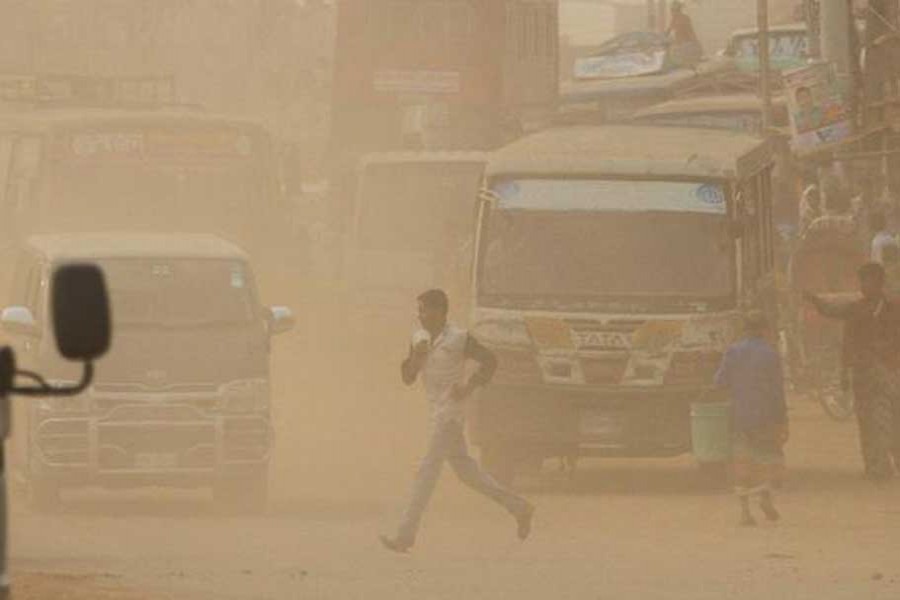The air quality of Dhaka, the capital city of Bangladesh, has been ranked as third most polluted in the world according to a World Health Organisation (WHO) study for mega cities with a population of 14 million or more. The finding of the latest study was released early last week
The Indian capital has once again been found to be the world's most polluted city and Mumbai is the fourth. Greater Cairo in Egypt is the second most polluted city and Beijing ranked fifth.
What is true about the capital city is that the brick kilns in and around it are mostly responsible for the air pollution. The polluted air inhaled by the city dwellers causes serious diseases. According to some research findings, the brick kilns are causing 58 per cent of the air pollution in the city.
It was also found that the root causes for pollution were different for each of the cities. In the case of Dhaka, for example, it is brick kilns, for Chattagram it is industrial smoke emissions, and for Narayanganj and Gazipur it is factory emissions. According to experts, the level of pollution can be reduced with the use of a water sprinkler above the chimney of any industrial unit. As the technology is expensive, the owners are reluctant to use it.
Around 25 per cent of the surveyed people of Dhaka city suffer from lung function abnormalities due to higher extent of air pollution. Such lung function abnormalities cause different types of airborne diseases, like bronchitis, pneumonia, asthma and chronic obstructive pulmonary disease (COPD).
Air pollution is a well-known and much-complained-about issue in Bangladesh. Few major global cities suffer from air pollution worse than Dhaka. During the dry season, when dust is particularly harmful, pollution levels can reach up to 16 times higher than the WHO's air quality guideline.
Air pollution has reached menacing proportions in Dhaka city which has become virtually unliveable. Urban air here is thick with fumes; water either in the rivers, ponds or tube-wells is polluted, and the land is poisoned. Unchecked dumping of waste -- a lot of it toxic, and noxious emissions from vehicles and the pesticides used in farmlands are the main culprits.
In addition to brick kilns, old buses, fleets of trucks and thousands of other poorly serviced vehicles contribute highly to the pollution. Moreover, dust from roads and construction sites and toxic fumes from industrial sites turn the air quality even worse.
Sadly enough, laws exist to book a polluter, but law enforcers shy away from using the laws in most cases because of an unholy alliance with the vehicle drivers. In most cases, polluting vehicles drive away emitting noxious fumes in the presence of law enforcement personnel without being held up or booked.
The ecological hazards of pollution and resource depletion pose a potentially catastrophic threat to Bangladesh. The government should take the environmental threats seriously, and create public awareness and undertake action-oriented programmes.
There is no denying that the air pollution in the city is worsening day by day due to the absence of monitoring. Experts say it is possible to control it, especially the unusual growth of dust, if the authorities concerned carry out their duties properly. Dust pollution can be controlled to some extent if the Department of Environment enforces the relevant laws during the construction of buildings and roads.
There is also a need for using modern techniques for cleaning city roads, spraying water to stop dust from spreading during construction works and keeping construction materials and sites under cover.
All said and done, if Beijing could substantially reduce its menacing air pollution when commuters had to keep their car headlights on even during daytime, why can't Bangladesh do it with good sense prevailing upon everybody?


